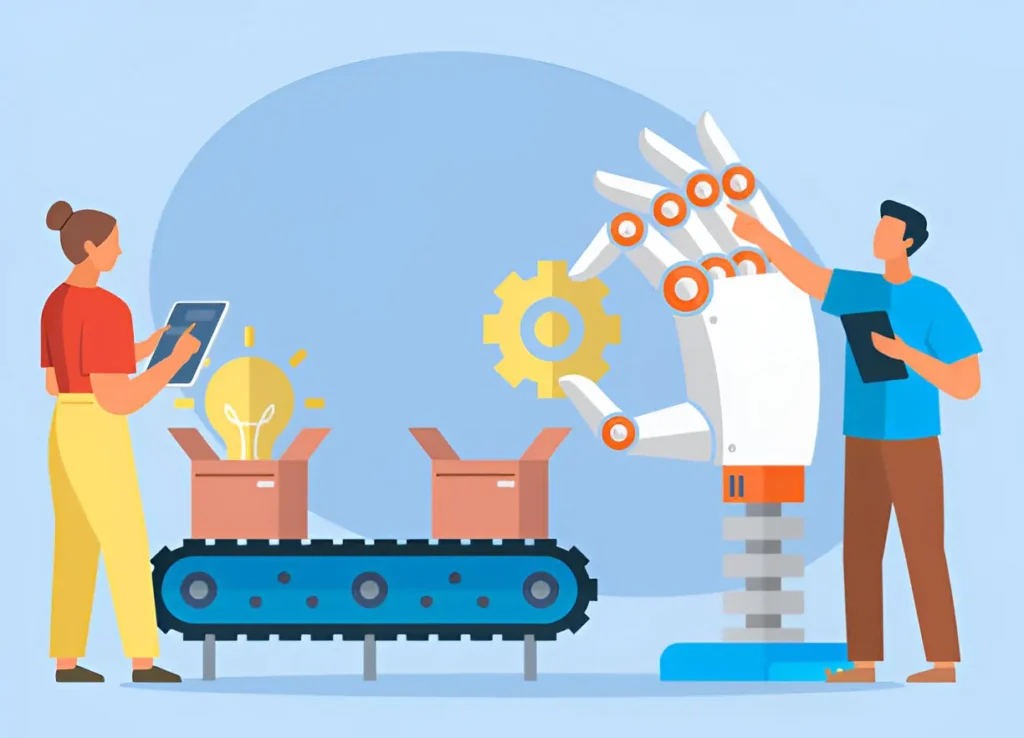In the era of digital transformation, automation has become a crucial tool for improving business efficiency. Companies strive to reduce costs, minimize errors, and accelerate routine operations. Two popular approaches to automation are Robotic Process Automation (RPA) and Business Process Automation (BPA). While they share a common goal, these technologies differ in scope, functionality, and implementation strategy.
What is Robotic Process Automation (RPA)?
RPA is a technology that enables software robots to mimic human interactions with digital systems. These bots perform repetitive, rule-based tasks such as data entry, invoice processing, and transferring data between systems. They work through user interfaces, just like a human would, without altering the underlying IT infrastructure. RPA is often used as a lightweight solution compared to implementing a full-scale business process automation platform, making it ideal for organizations looking to automate quickly without major system changes.
When to Use RPA
Robotic Process Automation (RPA) is most effective in scenarios where tasks are highly structured, rule-driven, and repetitive. It’s designed to handle tasks that don’t require human judgment, creativity, or decision-making. Here are the key cases where RPA delivers the most value:
- Tasks are repetitive and rules-based. If a task follows a clear set of rules and doesn’t change often, RPA bots can easily take over. This includes activities like copying and pasting data, processing transactions, validating entries, or generating reports – anything that involves doing the same thing over and over.
- Structured data is involved (e.g., spreadsheets, forms, databases). RPA works best with clearly organized data. If inputs come from structured sources like Excel files, CRM systems, ERP forms, or digital applications with fixed fields, bots can accurately extract, process, and insert information with little to no errors.
- Rapid deployment is needed with minimal IT involvement. One of the main advantages of RPA is that it doesn’t require deep changes to existing systems. Bots interact with applications through the front-end, just like human users. This makes RPA faster to implement compared to other automation solutions, especially in environments with legacy systems.
- The goal is to automate individual tasks, not full workflows. RPA excels at automating isolated tasks within a larger process. For example, extracting invoice data from an email and entering it into an accounting system can be handled by an RPA bot without the need to automate the entire procurement workflow.
- There’s a need to reduce manual workload and improve speed. RPA significantly reduces the time it takes to complete tasks that would otherwise consume hours of employee time. This not only speeds up operations but also frees up employees to focus on higher-value, more strategic work.
What is Business Process Automation (BPA)?
BPA is a broader and more comprehensive approach that focuses on automating entire business processes from start to finish. It involves integrating systems, managing data and workflows, and orchestrating activities across departments. BPA typically uses dedicated platforms and APIs to connect different tools and services, supporting long-term digital transformation strategies within an organization.
When to Use BPA?
BPA is especially valuable in the following scenarios:
- The process involves multiple steps or departments. BPA is ideal for complex workflows that span across different teams or functional areas, such as procurement, finance, HR, or customer service. For example, onboarding a new employee may involve IT (for hardware), HR (for contracts), and finance (for payroll setup). BPA helps orchestrate these activities into a single, automated flow that reduces delays and errors.
- Full system integration (CRM, ERP, databases) is needed. When automation requires data to flow between multiple business systems – such as customer relationship management (CRM), enterprise resource planning (ERP), and internal databases – BPA platforms ensure seamless integration. This allows for real-time data exchange, reduced duplication, and centralized process control.
- The business requires transparency, monitoring, and analytics. BPA platforms often come with built-in dashboards, reporting tools, and audit trails. This makes it easy for managers to track process performance, identify bottlenecks, ensure compliance, and make data-driven decisions. Real-time visibility into workflows is especially valuable for regulated industries or those with complex approval chains.
- Flexibility and scalability of the workflow are crucial. As businesses evolve, so do their processes. BPA allows workflows to be easily modified, expanded, or restructured without rebuilding everything from scratch. Whether you’re scaling operations, introducing new services, or adapting to compliance changes, BPA supports continuous process improvement.
- End-to-end optimization is the goal. BPA doesn’t just automate tasks – it rethinks how a process is designed. From input to output, BPA helps eliminate inefficiencies, reduce manual interventions, and improve customer experience. It enables organizations to build fully automated, cohesive workflows that align with business goals and long-term digital strategies.
Difference Between BPA and RPA
- BPA automates entire processes, while RPA automates individual tasks
- BPA handles complex workflows, RPA focuses on simple, rule-based operations
- BPA requires system integration (e.g., APIs), RPA works via user interfaces
- BPA supports both structured and unstructured data, RPA handles structured data only
- BPA takes longer to implement, RPA is quick to deploy
- BPA needs IT involvement, RPA requires minimal IT support
- BPA is scalable across departments, RPA has limited scalability
- BPA includes monitoring and analytics, RPA has limited visibility
- BPA aims for end-to-end process optimization, RPA aims to reduce manual workload
Both RPA and BPA are powerful automation tools, and choosing between them depends on your business needs. If you’re aiming for quick wins and task-level automation, RPA is the way to go. For broader, strategic transformation and integrated workflows, BPA offers a more robust and scalable solution. In many cases, organizations combine both approaches to achieve short-term efficiency and long-term process optimization.
Read more: Bridge Loans Simplify Real Estate Transactions
